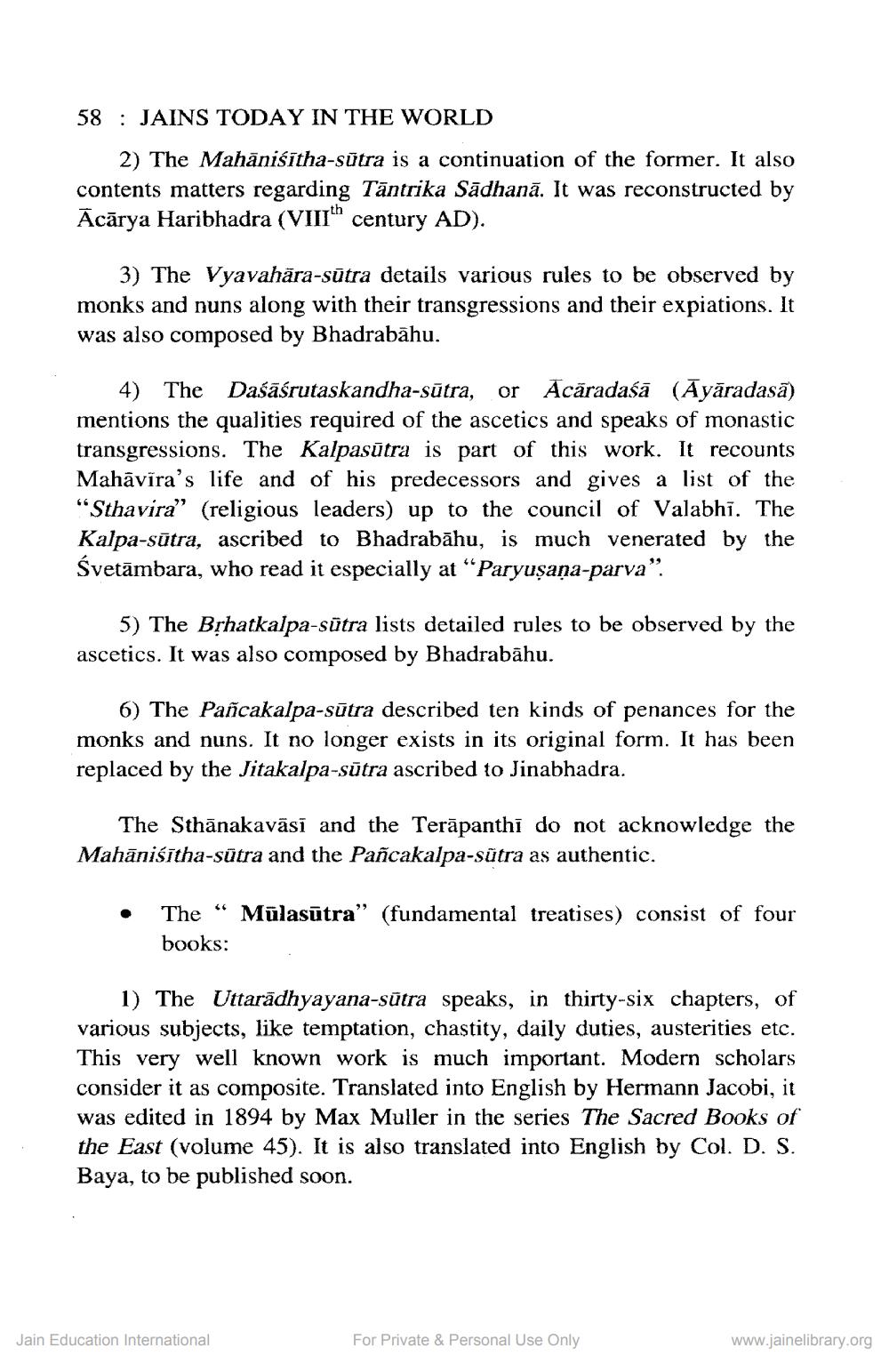________________
58 JAINS TODAY IN THE WORLD
2) The Mahāniśītha-sūtra is a continuation of the former. It also contents matters regarding Tantrika Sādhanā. It was reconstructed by Acārya Haribhadra (VIIIth century AD).
3) The Vyavahāra-sūtra details various rules to be observed by monks and nuns along with their transgressions and their expiations. It was also composed by Bhadrabahu.
4) The Daśāśrutaskandha-sūtra, or Acaradaśā (Ayāradasā) mentions the qualities required of the ascetics and speaks of monastic transgressions. The Kalpasūtra is part of this work. It recounts Mahāvīra's life and of his predecessors and gives a list of the "Sthavira" (religious leaders) up to the council of Valabhi. The Kalpa-sūtra, ascribed to Bhadrabahu, is much venerated by the Śvetämbara, who read it especially at "Paryuṣaṇa-parva".
5) The Bṛhatkalpa-sūtra lists detailed rules to be observed by the ascetics. It was also composed by Bhadrabahu.
6) The Pañcakalpa-sūtra described ten kinds of penances for the monks and nuns. It no longer exists in its original form. It has been replaced by the Jitakalpa-sutra ascribed to Jinabhadra.
The Sthanakavāsī and the Terapanthi do not acknowledge the Mahāniśītha-sūtra and the Pañcakalpa-sūtra as authentic.
• The Mūlasūtra" (fundamental treatises) consist of four books:
66
1) The Uttaradhyayana-sūtra speaks, in thirty-six chapters, of various subjects, like temptation, chastity, daily duties, austerities etc. This very well known work is much important. Modern scholars consider it as composite. Translated into English by Hermann Jacobi, it was edited in 1894 by Max Muller in the series The Sacred Books of the East (volume 45). It is also translated into English by Col. D. S. Baya, to be published soon.
Jain Education International
For Private & Personal Use Only
www.jainelibrary.org




